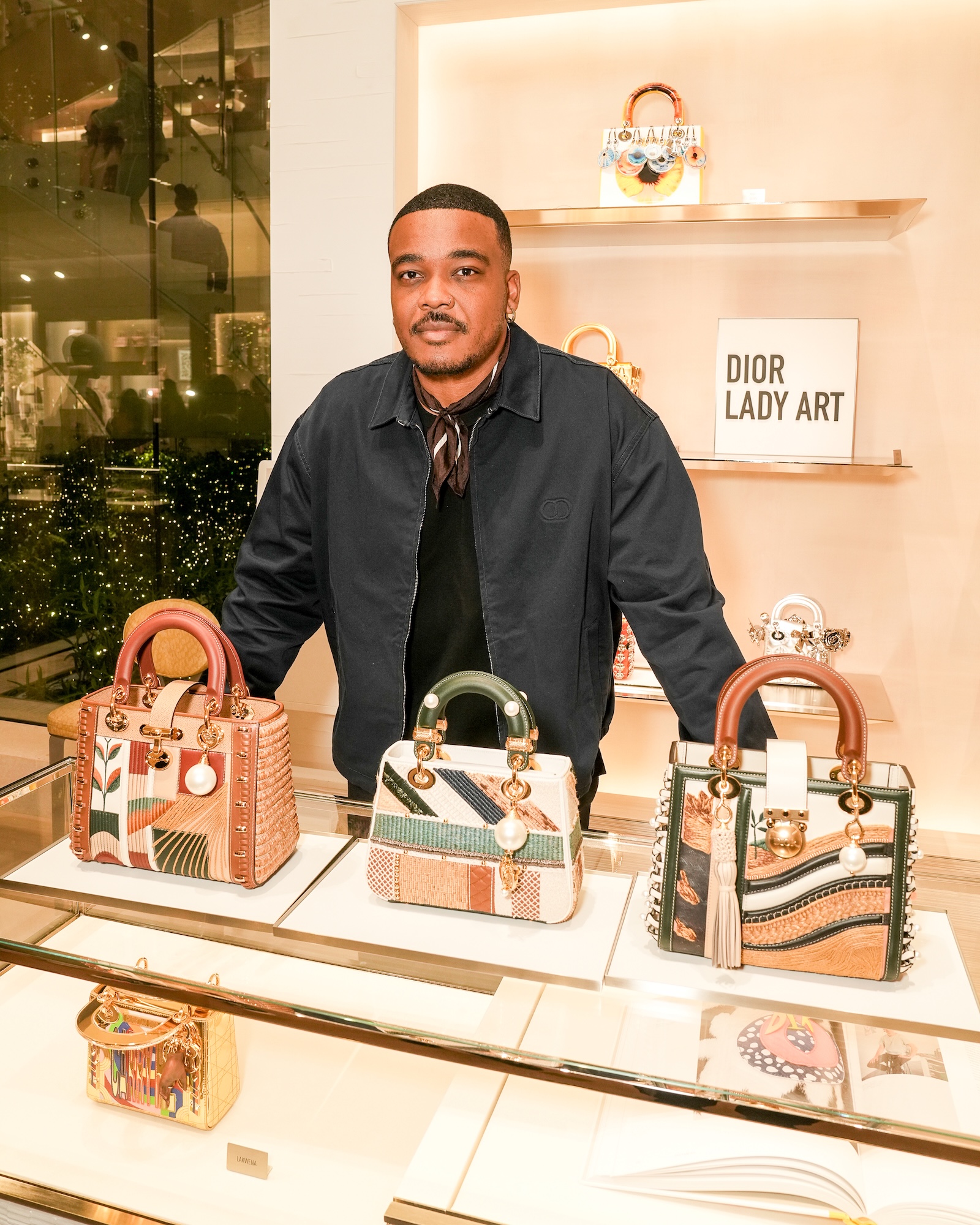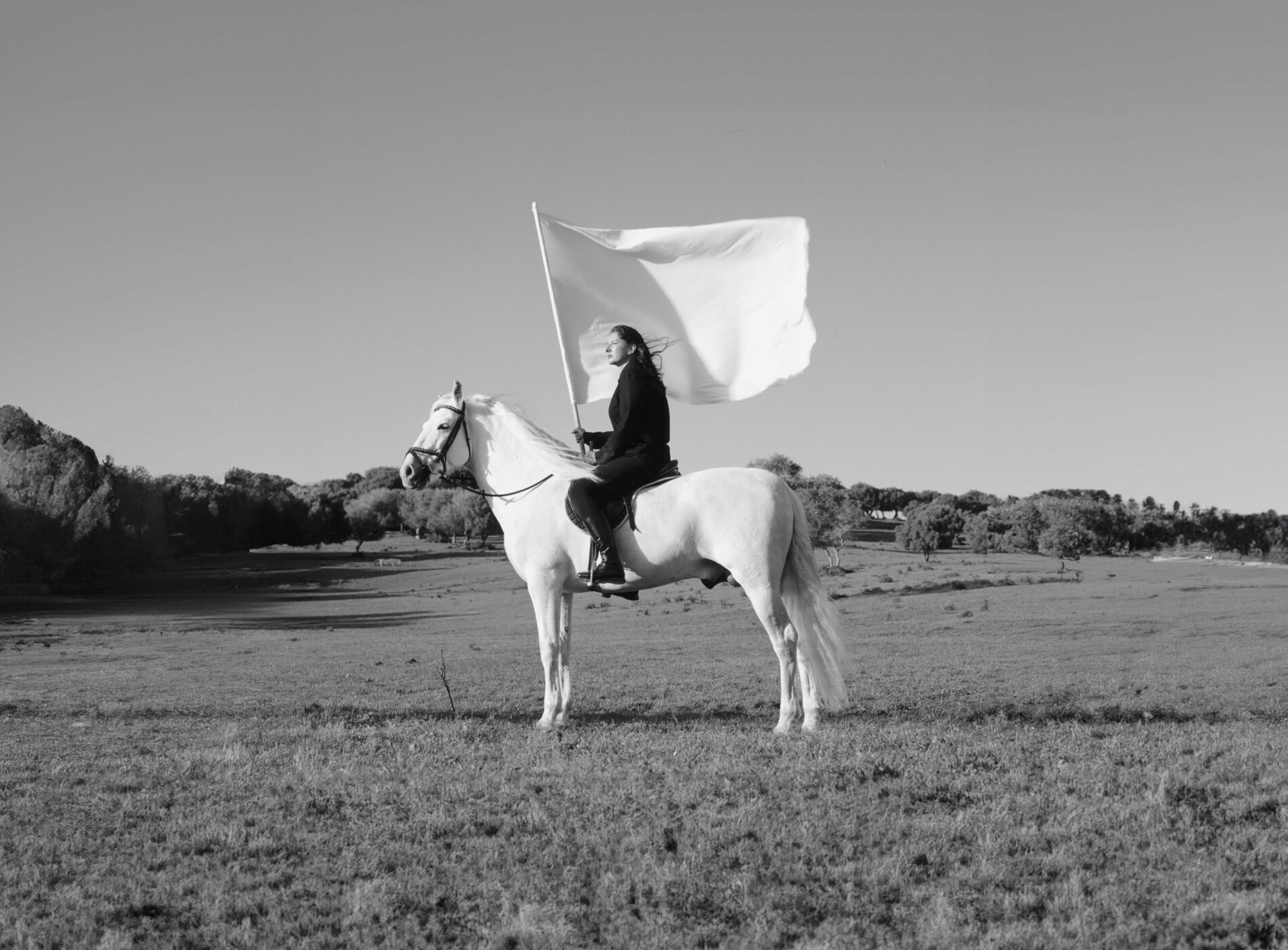

Dior’s _Christian Dior, Couturier du Reve_ exhibit at Les Arts Décoratifs in Paris, France
* * *
Over the last seven decades, Dior has become a symbol for timeless glamour and femininity. As we walk through the halls of the Musée des Arts Decoratifs, the setting for Dior’s _Christian Dior,_ _Couturier du Reve (Christian Dior: Designer of Dreams)_, we can’t help but feel nostalgic for a lavish lifestyle we’ve never had. Celebrating the 70th Anniversary of the legacy of Christian Dior and his six successors (Yves Saint Laurent, Marc Bohan, Gianfranco Ferré, John Galliano, Raf Simons, and now, Maria Grazia Chiuri) Christian Dior, Couturier du Reve is the largest fashion exhibition Paris has ever seen, and the fashion house’s first exhibition in over 30 years.
Spanning 32,000 square feet across the Palais du Louvre’s western wing with an elaborate set design showcasing a selection of photographs, sketches, illustrations, letters and over 300 Dior gowns, the scale of the exhibition meant that the set design and presentation of the exhibition had to be a major artwork installation of its own. Luckily, Nathalie Crinière is up to the task, and has designed an intricate, lavishly detailed series of transporting sets that allow the Dior story to unfold while magnifying the beauty of the many dresses and artifacts.
The first collection I admire is inside the Monsieur room, and as I walk past the sea of ever evolving colors, textures, designer visions, and waist sizes, I’m instantly transported to the Oscars in ‘61, the MET Gala in ’96, and the Venice Film Festival in 2008. As a long-time Dior die-hard, where some might see simply a beautiful dress, I see Elizabeth Taylor accepting her award for Best Actress in _Buttermilk 8,_ Princess Diana paying tribute to Dior in a titanic-blue slip dress, and Jennifer Lawrence gracing the red carpet in Couture Dior for the premiere of _The Burning Plan_.
Crinière presents _Christian Dior, Couturier du Reve_, as a visual recollection of Dior’s inspirations through a variety of settings, including an art gallery, an atelier, a street, a boudoir, journeys and a garden, all complemented by paintings, sculptures and decorative objects d’art. Throughout Crinière’s career, she’s worked within numerous crossroads of culture, including cinema, popular culture, and fine art, which made her particularly well suited to take on the monumental task. As we stroll through the exhibition, Crinière and I discuss her process:


Nathalie Crinière
* * *
**What are the particular considerations that designing installations for a fashion exhibition required?**
When working on a fashion exhibition you have to take care to bring life to all the dresses you are going to present, even those that are in poor condition. The exhibition is important in terms of keeping them _alive_.
This exhibition exists in two spaces that are very different. One is in a fashion gallery; which is a new level of exhibition and working out ‘what is the story?’ The other is in taking care of the architecture of the museum—this is very important.

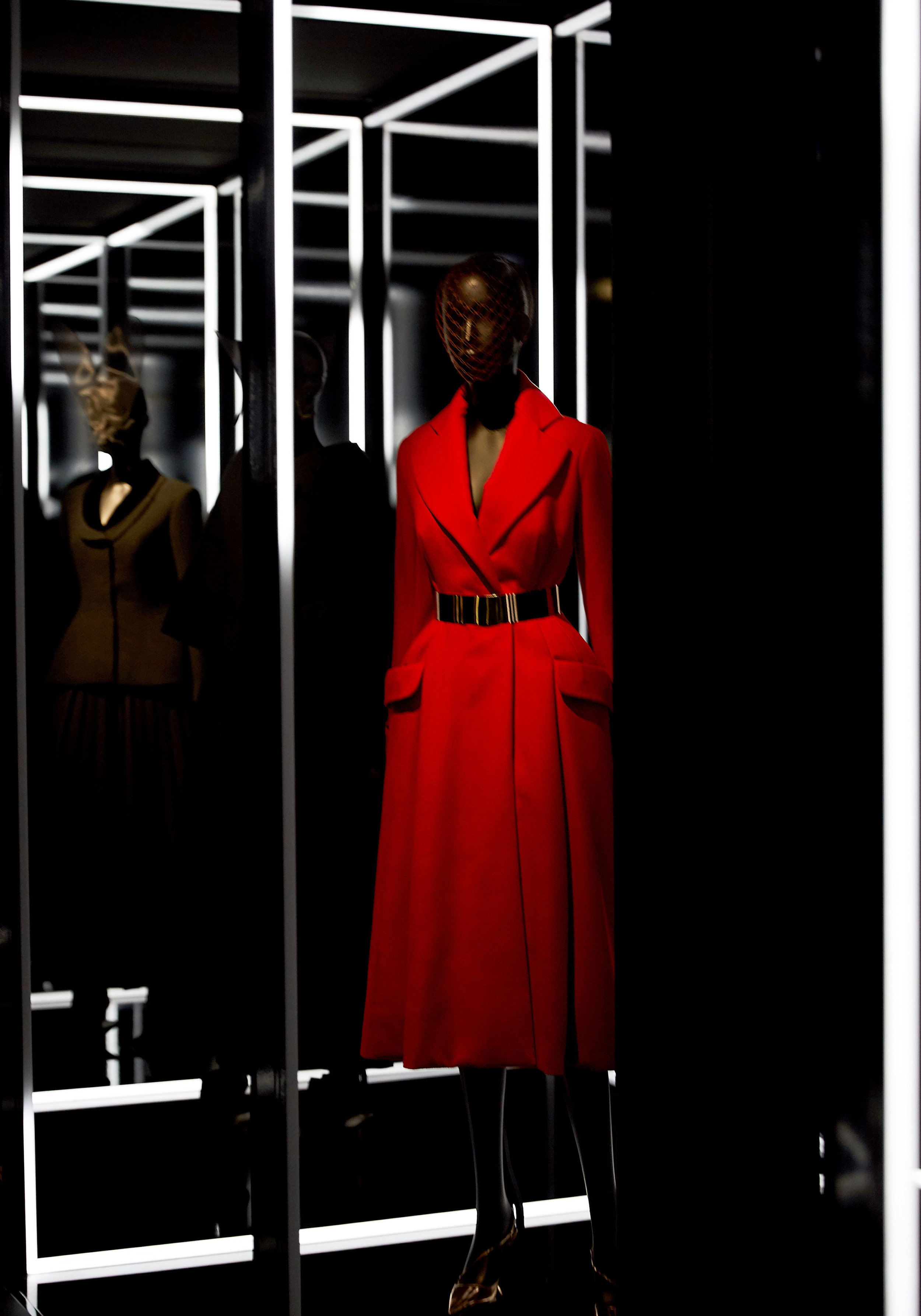
I’ve been working with Dior since a long time—I did a large exhibition about six years ago for the Pushkin Museum in St Petersburg—that was my first exhibition and I also made a big retrospective of Yves Saint Laurent here in Paris. The difference here is that you don’t only have Monsieur Dior, you also have all the other designers and you can see how each has their own personality, but that it is also all part of the ‘house.’
**“Designer of Dreams” is a romantic title for this exhibition. Please, describe a recent dream of yours?**
Making this exhibition was a dream in itself. Maybe to wear the beautiful dresses, because usually with a museum you cannot touch them—they are too far from you. Most of time in museums you have to put glass. This breaks the magic. Here, even though you still can’t touch them in a literal sense, you can still feel them.
**You have a history with Florence Müller, co-curator for Dior’s Parisian exhibit. Can you describe your working relationship? How does her curating vision come to life in your installations?**
We worked together from the very beginning to build the exhibition within the space— we start by writing a story with the dresses. Here we are fortunate as there are six designers after Dior and the gallery is divided, naturally, into six parts. We work towards making sure everything finds its space.
\*\*\*\*

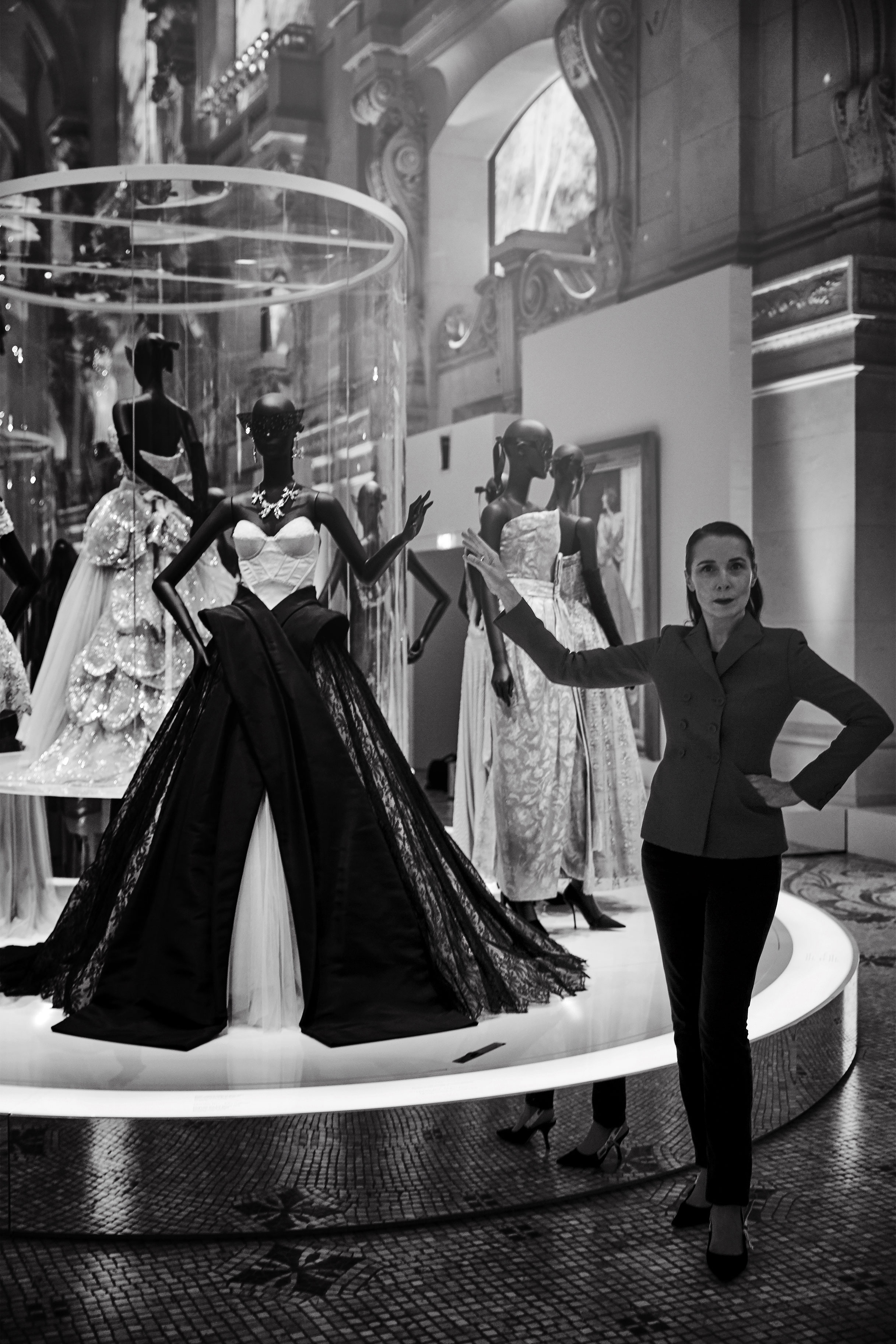
Florence Müller
* * *
Together, Crinière and curator Florence Müller have achieved an organically unfolding journey through time with the pairing of exquisite and sensitive installations with expert curation. With _Christian Dior, Couturier du Reve,_ Müller has chosen objects that illustrate the chronological evolution of Dior without weighing the viewer down. Moving through the astonishing array of objects feels frictionless, and the presentation feels expansive, educational, and harmonious. We asked Muller to describe the challenges she met while curating such a massive, comprehensive exhibition and what steps were taken to turn Couturier du Reve from a mere vision to a full-fledged iconic experience in fashion history:
**Can you tell us about the curatorial process for this exhibition?**
The main challenge of curating an exhibition of this size was going through 70 years of the history of Dior. We needed to include every designer, and we needed to make sure we captured the essence of what each individual personally brought to the house. The second challenge was to reduce such a comprehensive amount of work. The list at the beginning was enormous, and with a fashion exhibition, you have to reduce the list step-by-step. First we did a real mock up of the exhibition in a big storage place outside of Paris. Then we worked on the design within the space, the shape of each platform, and each group. I went through all of it, envisioning the end result.

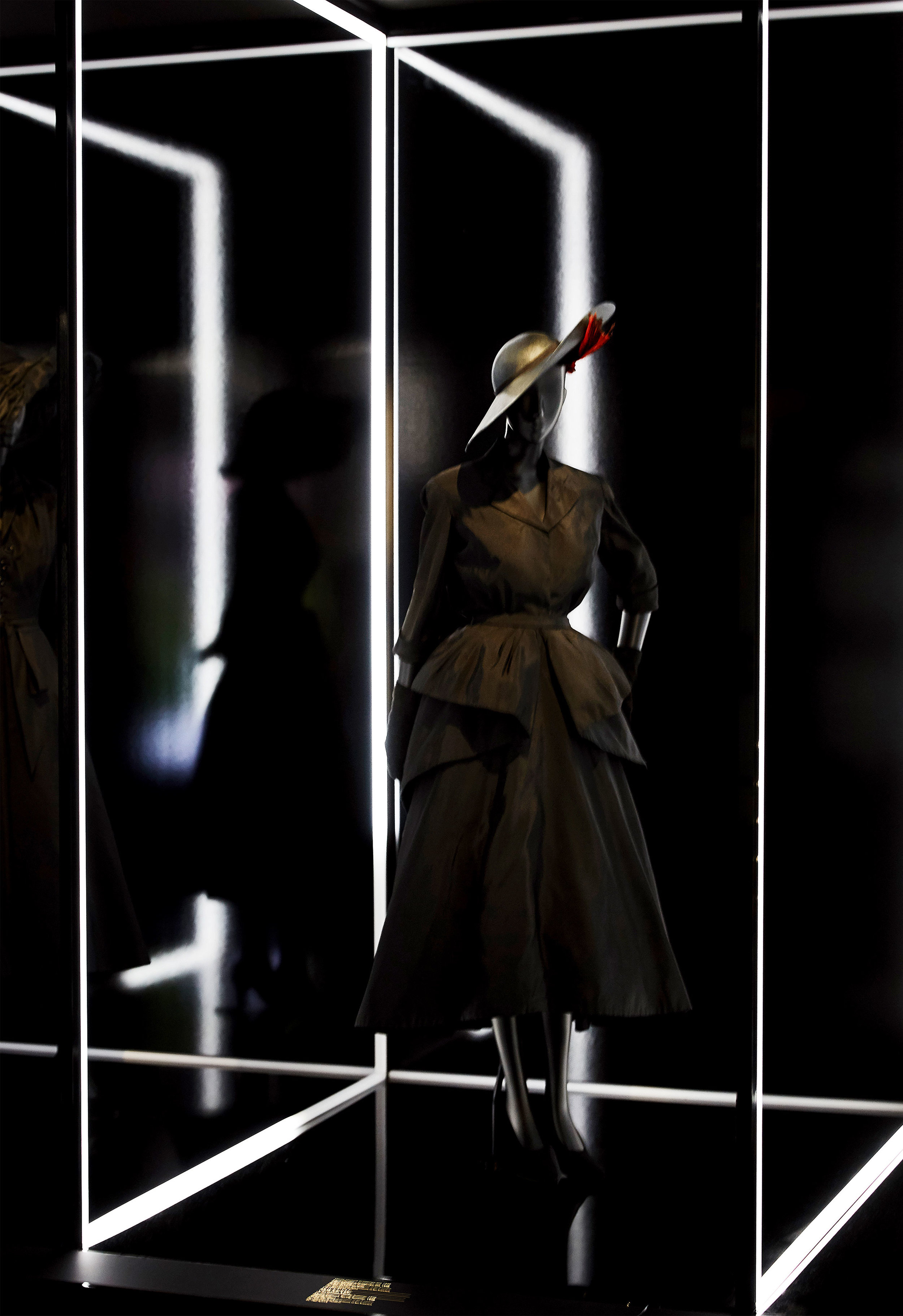
First, there was a screenplay, like for a movie—a thematic structure for the exhibition. Then I was looking at everything, every possibility: trying to compose a group, trying to do it for real, then removing things. Ultimately it’s about editing everything down to the essentials. The idea is to know if the piece is expressing the theme. Then, of course, some things—particular dresses for example—that are just there because they are beautiful.
**We know there are a lot to choose from but do you have a favorite piece from the gown collection?**
For me, it’s the first dress. The red dress at the entrance of the exhibition. The upper part of the dress is like a very simple shirt and then there are these extravagant pleats on the skirt—and I like red because it’s strong. I also like the dress called ‘Trumpet,’ because it’s a dress that doesn’t show the skin of the woman—everything is hidden. It looks very austere, yet it’s very narrow on the body, and I like this balance between something that’s both sexual and very…nun-like.
**Do you ever get nervous seeing such precious antiquities in the midst of thousands of people?**
It feels very vulnerable, but I think of this exhibition as a gift to the public. People living normal lives don’t usually have access to Haute Couture—it lives in the arena of the very rich. Here they can see it close-up, they can see all the details, and I think it’s really an opportunity for them to enter into this world, one which is normally very far away from most people’s day-to-day life. And for the dresses it’s a second life—they are alive again.
\*\*\*\*


Olivier Gabet
* * *
The dresses aren’t the only inanimate objects that seem to come alive throughout the exhibition. An array of paper flowers bloom and breathe alongside the efflorescent designs by Christian Dior and his successors, as a tribute to Dior’s love of gardens and flowers. Museum director Olivier Gabet, who co-curated the show alongside Müller, started to envision the retrospective layout, and all the thematic elements of the exhibition, three years before the general public even knew of its existence. We spoke to him about his role within the curatorial process:
**You have an extensive history with the decorative arts, notably the Musee D’Orsay’s 1850-1900 collection, among others. What sort of skills and insights did you acquire in that particular role that you applied to this curation?**
I had in mind the incredible exhibition 30 years ago here, in this part of the building, and I thought it was high time to do a real retrospective on Monsieur Dior and the House of Dior that included _all_ the artistic directors who succeeded him because 30 years is a long time, and I’m not sure that a lot of people today realize that behind the name of the brand—which is so powerful and so present all over the world—there was such an interesting story: his culture, his family background, and so on.
If a house like Christian Dior is still so creative 70 years later, it means that all of his successors were able to imagine their own way of looking at fashion in a contemporary sense that resonated with their time. What was important was not to be nostalgic but to show the full life of the heritage of Christian Dior, the man behind this brand who was very close to many artists—and very interesting artists too.
**What specifically, do you find the most interesting about Monsieur Dior?**
Christian Dior was one of the very few, if not the only couturier, to go from art to couture and not the other way around. Often you have people like Coco Chanel who make a lot of money through their incredible work and move into buying art and meeting artists; with Christian Dior it was very different. When he was young he had an idea he would work one day in the fashion world, and he came very slowly, step-by-step, from music to literature to art, through some his closest friends.
I was fascinated to see the depth and the richness of his cultural knowledge on many points. He traveled a lot; he was very well educated; he read a lot; he had a huge intellectual background—and when he arrived in the fashion world, he had all of that as his foundation. With a house like Dior you have all this very specific and delicate dialogue between decades and generations and very different people—Raf Simons has little similarity to the background of Monsieur Dior in terms of culture, however Maria Grazia is perhaps closer to Monsieur Dior than she is to Gianfranco Ferre, for example, and that is really, really interesting.
**This is the largest exhibition in Paris to date—what did you do to make it feel so light and easy to absorb?**
Many visitors at the opening said that to me; that it’s large, but you don’t feel it, it’s a lot of work to absorb but it doesn’t feel heavy. And that’s very parallel to couture itself—you can have this wonderful dress that looks so elegant and natural, and you don’t feel the weight that many people worked hours and hours. That’s true elegance. You know the philosophy of Monsieur Dior was very simple—let’s make women beautiful to make them happy. That perhaps seems stupid to a lot of people, but I don’t think it’s stupid at all. To me it’s really the basis of life.
* * *
Written by **Bianca O'Brien**
Photographed by **Chantelle Dosser**
 
Dior’s _Christian Dior, Couturier du Reve_ exhibit at Les Arts Décoratifs in Paris, France
* * *
Over the last seven decades, Dior has become a symbol for timeless glamour and femininity. As we walk through the halls of the Musée des Arts Decoratifs, the setting for Dior’s _Christian Dior,_ _Couturier du Reve (Christian Dior: Designer of Dreams)_, we can’t help but feel nostalgic for a lavish lifestyle we’ve never had. Celebrating the 70th Anniversary of the legacy of Christian Dior and his six successors (Yves Saint Laurent, Marc Bohan, Gianfranco Ferré, John Galliano, Raf Simons, and now, Maria Grazia Chiuri) Christian Dior, Couturier du Reve is the largest fashion exhibition Paris has ever seen, and the fashion house’s first exhibition in over 30 years.
Spanning 32,000 square feet across the Palais du Louvre’s western wing with an elaborate set design showcasing a selection of photographs, sketches, illustrations, letters and over 300 Dior gowns, the scale of the exhibition meant that the set design and presentation of the exhibition had to be a major artwork installation of its own. Luckily, Nathalie Crinière is up to the task, and has designed an intricate, lavishly detailed series of transporting sets that allow the Dior story to unfold while magnifying the beauty of the many dresses and artifacts.
The first collection I admire is inside the Monsieur room, and as I walk past the sea of ever evolving colors, textures, designer visions, and waist sizes, I’m instantly transported to the Oscars in ‘61, the MET Gala in ’96, and the Venice Film Festival in 2008. As a long-time Dior die-hard, where some might see simply a beautiful dress, I see Elizabeth Taylor accepting her award for Best Actress in _Buttermilk 8,_ Princess Diana paying tribute to Dior in a titanic-blue slip dress, and Jennifer Lawrence gracing the red carpet in Couture Dior for the premiere of _The Burning Plan_.
Crinière presents _Christian Dior, Couturier du Reve_, as a visual recollection of Dior’s inspirations through a variety of settings, including an art gallery, an atelier, a street, a boudoir, journeys and a garden, all complemented by paintings, sculptures and decorative objects d’art. Throughout Crinière’s career, she’s worked within numerous crossroads of culture, including cinema, popular culture, and fine art, which made her particularly well suited to take on the monumental task. As we stroll through the exhibition, Crinière and I discuss her process:

Dior’s _Christian Dior, Couturier du Reve_ exhibit at Les Arts Décoratifs in Paris, France
* * *
Over the last seven decades, Dior has become a symbol for timeless glamour and femininity. As we walk through the halls of the Musée des Arts Decoratifs, the setting for Dior’s _Christian Dior,_ _Couturier du Reve (Christian Dior: Designer of Dreams)_, we can’t help but feel nostalgic for a lavish lifestyle we’ve never had. Celebrating the 70th Anniversary of the legacy of Christian Dior and his six successors (Yves Saint Laurent, Marc Bohan, Gianfranco Ferré, John Galliano, Raf Simons, and now, Maria Grazia Chiuri) Christian Dior, Couturier du Reve is the largest fashion exhibition Paris has ever seen, and the fashion house’s first exhibition in over 30 years.
Spanning 32,000 square feet across the Palais du Louvre’s western wing with an elaborate set design showcasing a selection of photographs, sketches, illustrations, letters and over 300 Dior gowns, the scale of the exhibition meant that the set design and presentation of the exhibition had to be a major artwork installation of its own. Luckily, Nathalie Crinière is up to the task, and has designed an intricate, lavishly detailed series of transporting sets that allow the Dior story to unfold while magnifying the beauty of the many dresses and artifacts.
The first collection I admire is inside the Monsieur room, and as I walk past the sea of ever evolving colors, textures, designer visions, and waist sizes, I’m instantly transported to the Oscars in ‘61, the MET Gala in ’96, and the Venice Film Festival in 2008. As a long-time Dior die-hard, where some might see simply a beautiful dress, I see Elizabeth Taylor accepting her award for Best Actress in _Buttermilk 8,_ Princess Diana paying tribute to Dior in a titanic-blue slip dress, and Jennifer Lawrence gracing the red carpet in Couture Dior for the premiere of _The Burning Plan_.
Crinière presents _Christian Dior, Couturier du Reve_, as a visual recollection of Dior’s inspirations through a variety of settings, including an art gallery, an atelier, a street, a boudoir, journeys and a garden, all complemented by paintings, sculptures and decorative objects d’art. Throughout Crinière’s career, she’s worked within numerous crossroads of culture, including cinema, popular culture, and fine art, which made her particularly well suited to take on the monumental task. As we stroll through the exhibition, Crinière and I discuss her process:
 
Nathalie Crinière
* * *
**What are the particular considerations that designing installations for a fashion exhibition required?**
When working on a fashion exhibition you have to take care to bring life to all the dresses you are going to present, even those that are in poor condition. The exhibition is important in terms of keeping them _alive_.
This exhibition exists in two spaces that are very different. One is in a fashion gallery; which is a new level of exhibition and working out ‘what is the story?’ The other is in taking care of the architecture of the museum—this is very important.

Nathalie Crinière
* * *
**What are the particular considerations that designing installations for a fashion exhibition required?**
When working on a fashion exhibition you have to take care to bring life to all the dresses you are going to present, even those that are in poor condition. The exhibition is important in terms of keeping them _alive_.
This exhibition exists in two spaces that are very different. One is in a fashion gallery; which is a new level of exhibition and working out ‘what is the story?’ The other is in taking care of the architecture of the museum—this is very important.
 
I’ve been working with Dior since a long time—I did a large exhibition about six years ago for the Pushkin Museum in St Petersburg—that was my first exhibition and I also made a big retrospective of Yves Saint Laurent here in Paris. The difference here is that you don’t only have Monsieur Dior, you also have all the other designers and you can see how each has their own personality, but that it is also all part of the ‘house.’
**“Designer of Dreams” is a romantic title for this exhibition. Please, describe a recent dream of yours?**
Making this exhibition was a dream in itself. Maybe to wear the beautiful dresses, because usually with a museum you cannot touch them—they are too far from you. Most of time in museums you have to put glass. This breaks the magic. Here, even though you still can’t touch them in a literal sense, you can still feel them.
**You have a history with Florence Müller, co-curator for Dior’s Parisian exhibit. Can you describe your working relationship? How does her curating vision come to life in your installations?**
We worked together from the very beginning to build the exhibition within the space— we start by writing a story with the dresses. Here we are fortunate as there are six designers after Dior and the gallery is divided, naturally, into six parts. We work towards making sure everything finds its space.
\*\*\*\*

I’ve been working with Dior since a long time—I did a large exhibition about six years ago for the Pushkin Museum in St Petersburg—that was my first exhibition and I also made a big retrospective of Yves Saint Laurent here in Paris. The difference here is that you don’t only have Monsieur Dior, you also have all the other designers and you can see how each has their own personality, but that it is also all part of the ‘house.’
**“Designer of Dreams” is a romantic title for this exhibition. Please, describe a recent dream of yours?**
Making this exhibition was a dream in itself. Maybe to wear the beautiful dresses, because usually with a museum you cannot touch them—they are too far from you. Most of time in museums you have to put glass. This breaks the magic. Here, even though you still can’t touch them in a literal sense, you can still feel them.
**You have a history with Florence Müller, co-curator for Dior’s Parisian exhibit. Can you describe your working relationship? How does her curating vision come to life in your installations?**
We worked together from the very beginning to build the exhibition within the space— we start by writing a story with the dresses. Here we are fortunate as there are six designers after Dior and the gallery is divided, naturally, into six parts. We work towards making sure everything finds its space.
\*\*\*\*
 
Florence Müller
* * *
Together, Crinière and curator Florence Müller have achieved an organically unfolding journey through time with the pairing of exquisite and sensitive installations with expert curation. With _Christian Dior, Couturier du Reve,_ Müller has chosen objects that illustrate the chronological evolution of Dior without weighing the viewer down. Moving through the astonishing array of objects feels frictionless, and the presentation feels expansive, educational, and harmonious. We asked Muller to describe the challenges she met while curating such a massive, comprehensive exhibition and what steps were taken to turn Couturier du Reve from a mere vision to a full-fledged iconic experience in fashion history:
**Can you tell us about the curatorial process for this exhibition?**
The main challenge of curating an exhibition of this size was going through 70 years of the history of Dior. We needed to include every designer, and we needed to make sure we captured the essence of what each individual personally brought to the house. The second challenge was to reduce such a comprehensive amount of work. The list at the beginning was enormous, and with a fashion exhibition, you have to reduce the list step-by-step. First we did a real mock up of the exhibition in a big storage place outside of Paris. Then we worked on the design within the space, the shape of each platform, and each group. I went through all of it, envisioning the end result.

Florence Müller
* * *
Together, Crinière and curator Florence Müller have achieved an organically unfolding journey through time with the pairing of exquisite and sensitive installations with expert curation. With _Christian Dior, Couturier du Reve,_ Müller has chosen objects that illustrate the chronological evolution of Dior without weighing the viewer down. Moving through the astonishing array of objects feels frictionless, and the presentation feels expansive, educational, and harmonious. We asked Muller to describe the challenges she met while curating such a massive, comprehensive exhibition and what steps were taken to turn Couturier du Reve from a mere vision to a full-fledged iconic experience in fashion history:
**Can you tell us about the curatorial process for this exhibition?**
The main challenge of curating an exhibition of this size was going through 70 years of the history of Dior. We needed to include every designer, and we needed to make sure we captured the essence of what each individual personally brought to the house. The second challenge was to reduce such a comprehensive amount of work. The list at the beginning was enormous, and with a fashion exhibition, you have to reduce the list step-by-step. First we did a real mock up of the exhibition in a big storage place outside of Paris. Then we worked on the design within the space, the shape of each platform, and each group. I went through all of it, envisioning the end result.
 
First, there was a screenplay, like for a movie—a thematic structure for the exhibition. Then I was looking at everything, every possibility: trying to compose a group, trying to do it for real, then removing things. Ultimately it’s about editing everything down to the essentials. The idea is to know if the piece is expressing the theme. Then, of course, some things—particular dresses for example—that are just there because they are beautiful.
**We know there are a lot to choose from but do you have a favorite piece from the gown collection?**
For me, it’s the first dress. The red dress at the entrance of the exhibition. The upper part of the dress is like a very simple shirt and then there are these extravagant pleats on the skirt—and I like red because it’s strong. I also like the dress called ‘Trumpet,’ because it’s a dress that doesn’t show the skin of the woman—everything is hidden. It looks very austere, yet it’s very narrow on the body, and I like this balance between something that’s both sexual and very…nun-like.
**Do you ever get nervous seeing such precious antiquities in the midst of thousands of people?**
It feels very vulnerable, but I think of this exhibition as a gift to the public. People living normal lives don’t usually have access to Haute Couture—it lives in the arena of the very rich. Here they can see it close-up, they can see all the details, and I think it’s really an opportunity for them to enter into this world, one which is normally very far away from most people’s day-to-day life. And for the dresses it’s a second life—they are alive again.
\*\*\*\*

First, there was a screenplay, like for a movie—a thematic structure for the exhibition. Then I was looking at everything, every possibility: trying to compose a group, trying to do it for real, then removing things. Ultimately it’s about editing everything down to the essentials. The idea is to know if the piece is expressing the theme. Then, of course, some things—particular dresses for example—that are just there because they are beautiful.
**We know there are a lot to choose from but do you have a favorite piece from the gown collection?**
For me, it’s the first dress. The red dress at the entrance of the exhibition. The upper part of the dress is like a very simple shirt and then there are these extravagant pleats on the skirt—and I like red because it’s strong. I also like the dress called ‘Trumpet,’ because it’s a dress that doesn’t show the skin of the woman—everything is hidden. It looks very austere, yet it’s very narrow on the body, and I like this balance between something that’s both sexual and very…nun-like.
**Do you ever get nervous seeing such precious antiquities in the midst of thousands of people?**
It feels very vulnerable, but I think of this exhibition as a gift to the public. People living normal lives don’t usually have access to Haute Couture—it lives in the arena of the very rich. Here they can see it close-up, they can see all the details, and I think it’s really an opportunity for them to enter into this world, one which is normally very far away from most people’s day-to-day life. And for the dresses it’s a second life—they are alive again.
\*\*\*\*
 
Olivier Gabet
* * *
The dresses aren’t the only inanimate objects that seem to come alive throughout the exhibition. An array of paper flowers bloom and breathe alongside the efflorescent designs by Christian Dior and his successors, as a tribute to Dior’s love of gardens and flowers. Museum director Olivier Gabet, who co-curated the show alongside Müller, started to envision the retrospective layout, and all the thematic elements of the exhibition, three years before the general public even knew of its existence. We spoke to him about his role within the curatorial process:
**You have an extensive history with the decorative arts, notably the Musee D’Orsay’s 1850-1900 collection, among others. What sort of skills and insights did you acquire in that particular role that you applied to this curation?**
I had in mind the incredible exhibition 30 years ago here, in this part of the building, and I thought it was high time to do a real retrospective on Monsieur Dior and the House of Dior that included _all_ the artistic directors who succeeded him because 30 years is a long time, and I’m not sure that a lot of people today realize that behind the name of the brand—which is so powerful and so present all over the world—there was such an interesting story: his culture, his family background, and so on.
If a house like Christian Dior is still so creative 70 years later, it means that all of his successors were able to imagine their own way of looking at fashion in a contemporary sense that resonated with their time. What was important was not to be nostalgic but to show the full life of the heritage of Christian Dior, the man behind this brand who was very close to many artists—and very interesting artists too.
**What specifically, do you find the most interesting about Monsieur Dior?**
Christian Dior was one of the very few, if not the only couturier, to go from art to couture and not the other way around. Often you have people like Coco Chanel who make a lot of money through their incredible work and move into buying art and meeting artists; with Christian Dior it was very different. When he was young he had an idea he would work one day in the fashion world, and he came very slowly, step-by-step, from music to literature to art, through some his closest friends.
I was fascinated to see the depth and the richness of his cultural knowledge on many points. He traveled a lot; he was very well educated; he read a lot; he had a huge intellectual background—and when he arrived in the fashion world, he had all of that as his foundation. With a house like Dior you have all this very specific and delicate dialogue between decades and generations and very different people—Raf Simons has little similarity to the background of Monsieur Dior in terms of culture, however Maria Grazia is perhaps closer to Monsieur Dior than she is to Gianfranco Ferre, for example, and that is really, really interesting.
**This is the largest exhibition in Paris to date—what did you do to make it feel so light and easy to absorb?**
Many visitors at the opening said that to me; that it’s large, but you don’t feel it, it’s a lot of work to absorb but it doesn’t feel heavy. And that’s very parallel to couture itself—you can have this wonderful dress that looks so elegant and natural, and you don’t feel the weight that many people worked hours and hours. That’s true elegance. You know the philosophy of Monsieur Dior was very simple—let’s make women beautiful to make them happy. That perhaps seems stupid to a lot of people, but I don’t think it’s stupid at all. To me it’s really the basis of life.
* * *
Written by **Bianca O'Brien**
Photographed by **Chantelle Dosser**

Olivier Gabet
* * *
The dresses aren’t the only inanimate objects that seem to come alive throughout the exhibition. An array of paper flowers bloom and breathe alongside the efflorescent designs by Christian Dior and his successors, as a tribute to Dior’s love of gardens and flowers. Museum director Olivier Gabet, who co-curated the show alongside Müller, started to envision the retrospective layout, and all the thematic elements of the exhibition, three years before the general public even knew of its existence. We spoke to him about his role within the curatorial process:
**You have an extensive history with the decorative arts, notably the Musee D’Orsay’s 1850-1900 collection, among others. What sort of skills and insights did you acquire in that particular role that you applied to this curation?**
I had in mind the incredible exhibition 30 years ago here, in this part of the building, and I thought it was high time to do a real retrospective on Monsieur Dior and the House of Dior that included _all_ the artistic directors who succeeded him because 30 years is a long time, and I’m not sure that a lot of people today realize that behind the name of the brand—which is so powerful and so present all over the world—there was such an interesting story: his culture, his family background, and so on.
If a house like Christian Dior is still so creative 70 years later, it means that all of his successors were able to imagine their own way of looking at fashion in a contemporary sense that resonated with their time. What was important was not to be nostalgic but to show the full life of the heritage of Christian Dior, the man behind this brand who was very close to many artists—and very interesting artists too.
**What specifically, do you find the most interesting about Monsieur Dior?**
Christian Dior was one of the very few, if not the only couturier, to go from art to couture and not the other way around. Often you have people like Coco Chanel who make a lot of money through their incredible work and move into buying art and meeting artists; with Christian Dior it was very different. When he was young he had an idea he would work one day in the fashion world, and he came very slowly, step-by-step, from music to literature to art, through some his closest friends.
I was fascinated to see the depth and the richness of his cultural knowledge on many points. He traveled a lot; he was very well educated; he read a lot; he had a huge intellectual background—and when he arrived in the fashion world, he had all of that as his foundation. With a house like Dior you have all this very specific and delicate dialogue between decades and generations and very different people—Raf Simons has little similarity to the background of Monsieur Dior in terms of culture, however Maria Grazia is perhaps closer to Monsieur Dior than she is to Gianfranco Ferre, for example, and that is really, really interesting.
**This is the largest exhibition in Paris to date—what did you do to make it feel so light and easy to absorb?**
Many visitors at the opening said that to me; that it’s large, but you don’t feel it, it’s a lot of work to absorb but it doesn’t feel heavy. And that’s very parallel to couture itself—you can have this wonderful dress that looks so elegant and natural, and you don’t feel the weight that many people worked hours and hours. That’s true elegance. You know the philosophy of Monsieur Dior was very simple—let’s make women beautiful to make them happy. That perhaps seems stupid to a lot of people, but I don’t think it’s stupid at all. To me it’s really the basis of life.
* * *
Written by **Bianca O'Brien**
Photographed by **Chantelle Dosser**

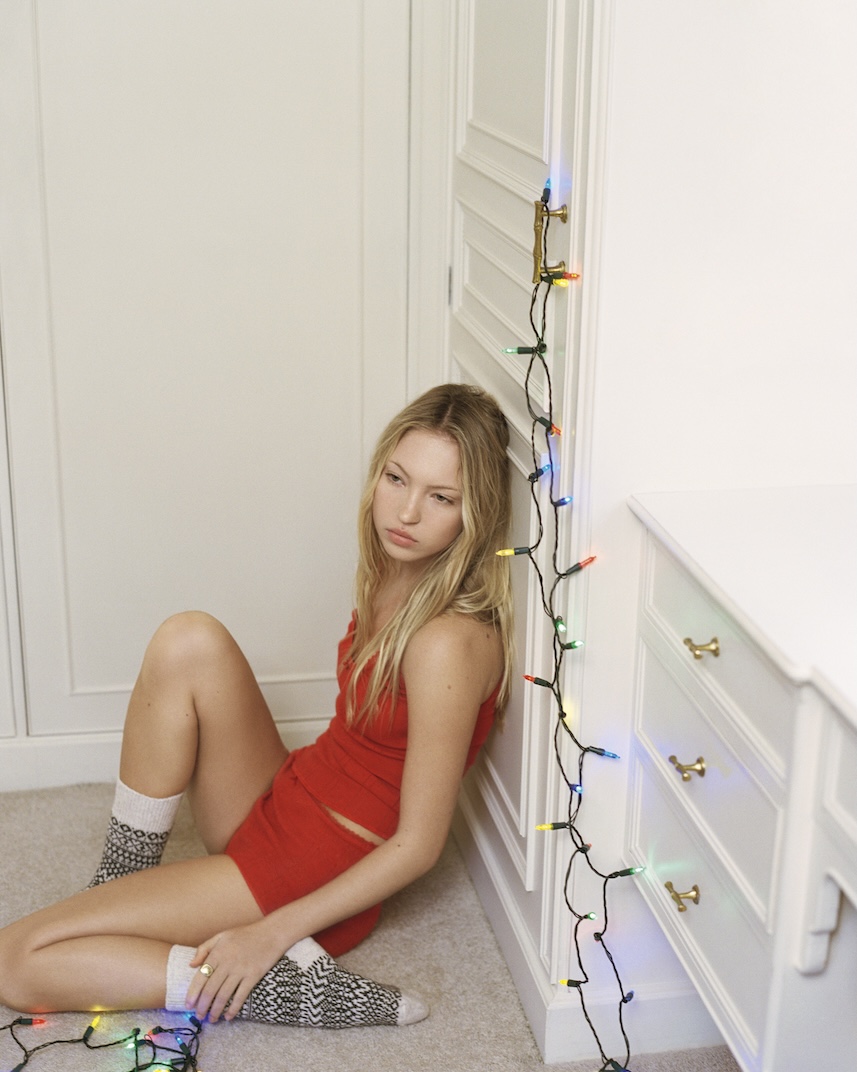
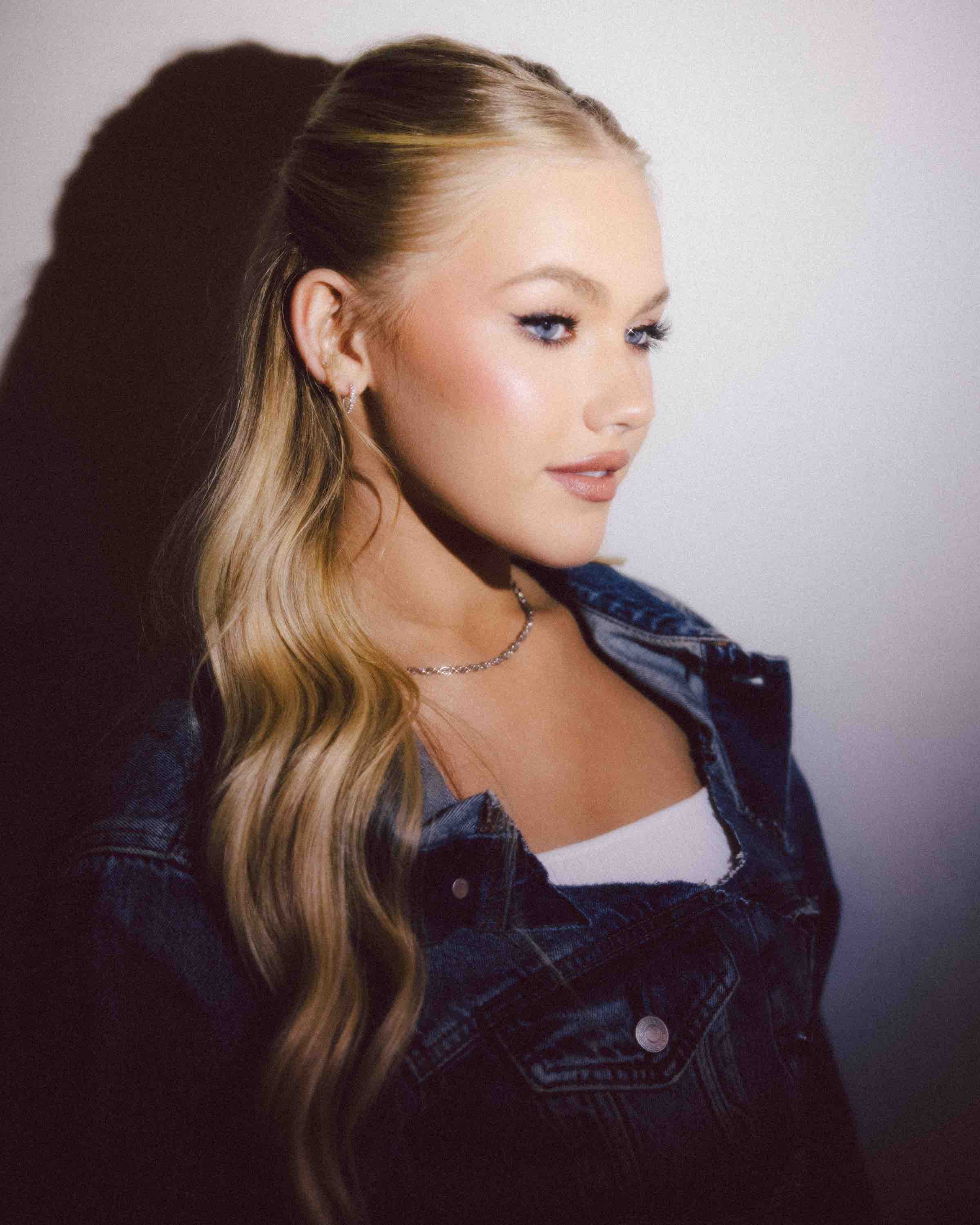
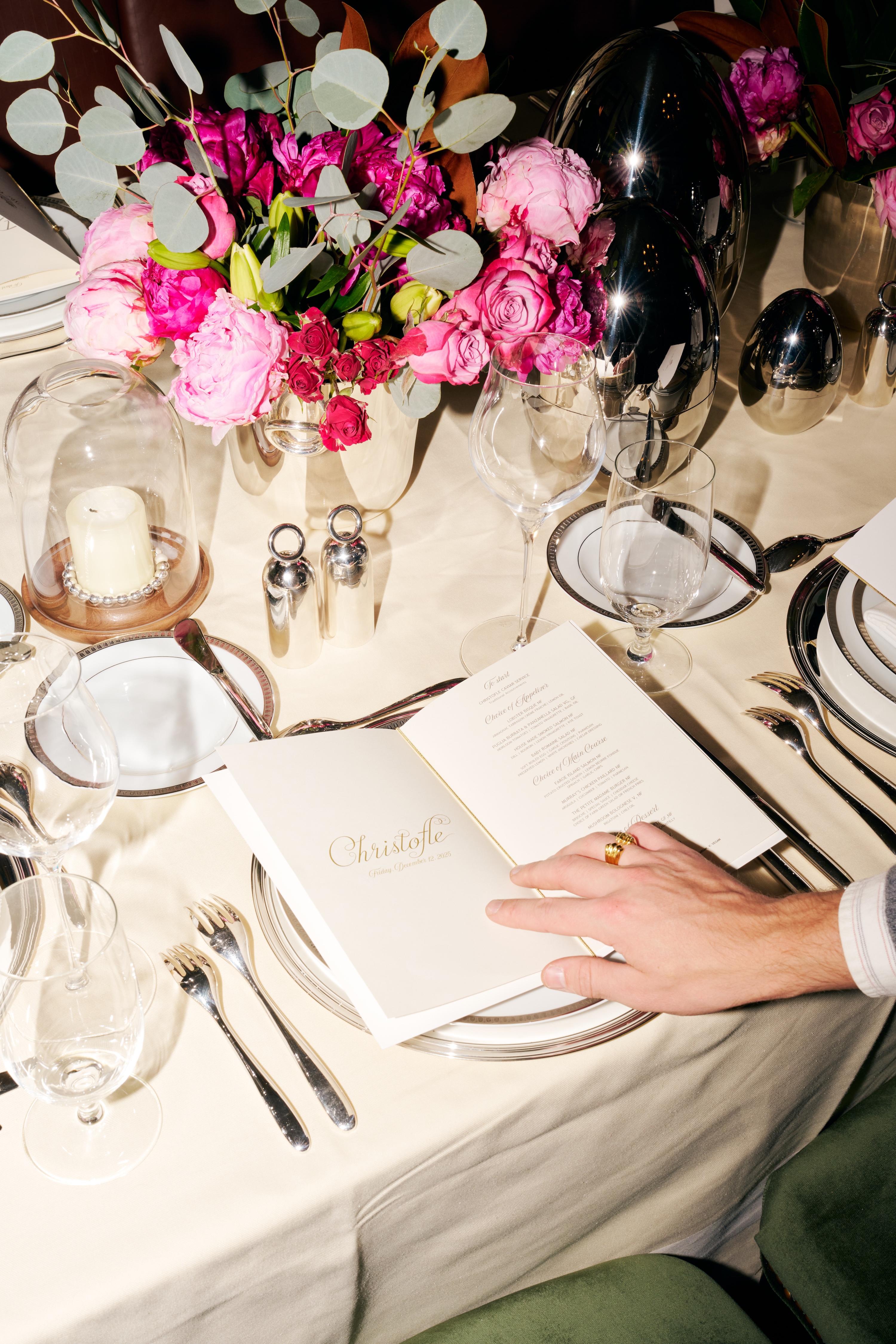

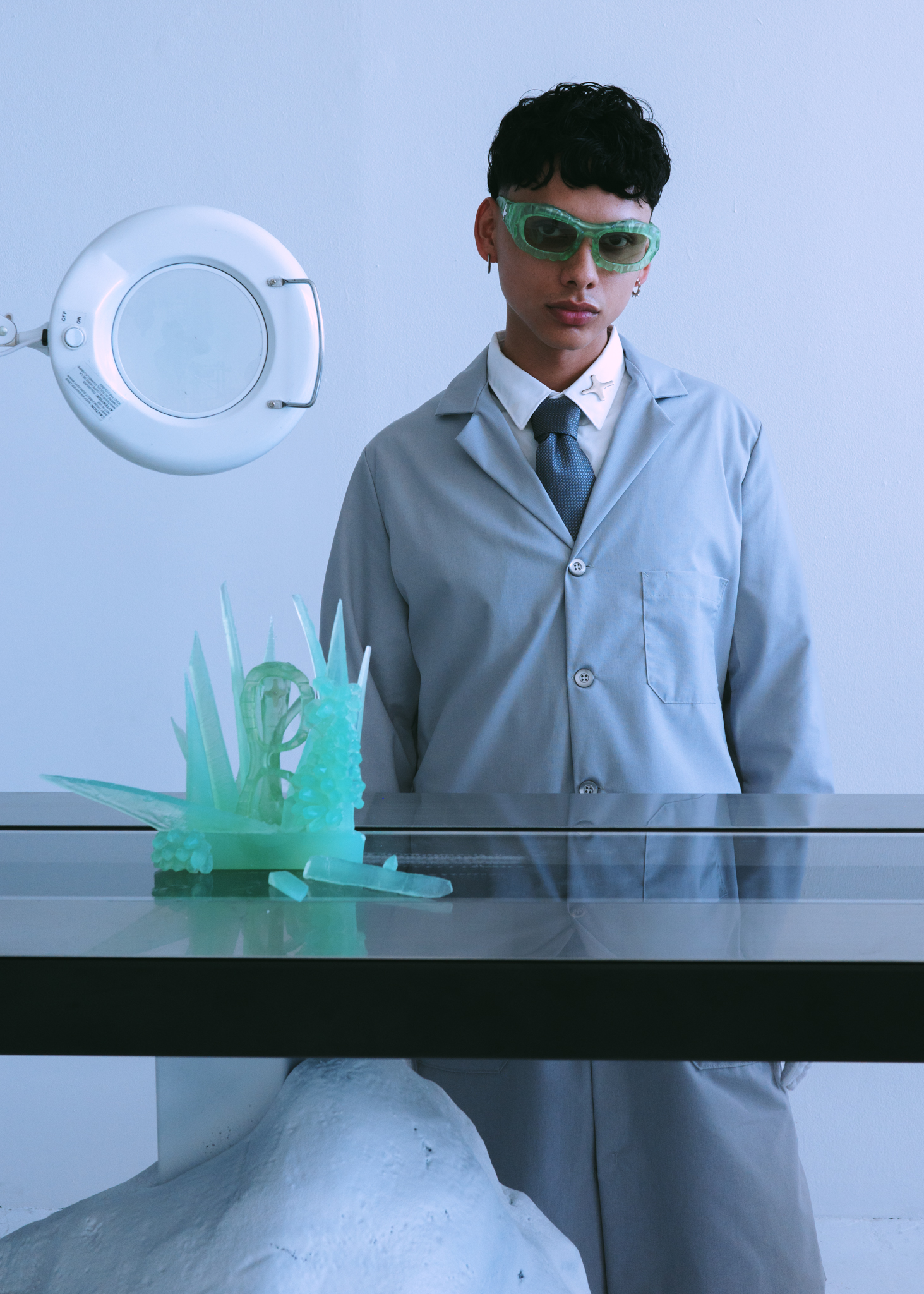
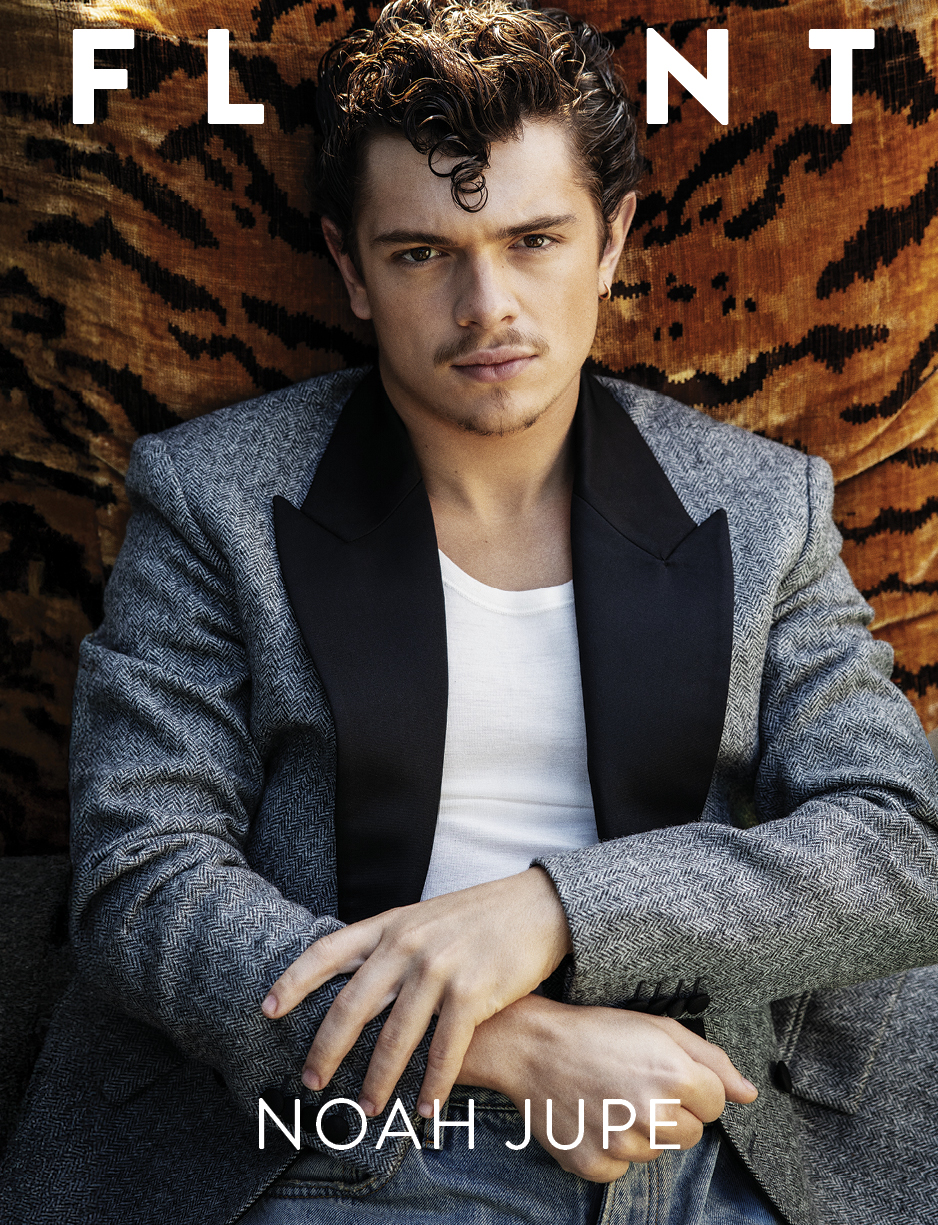
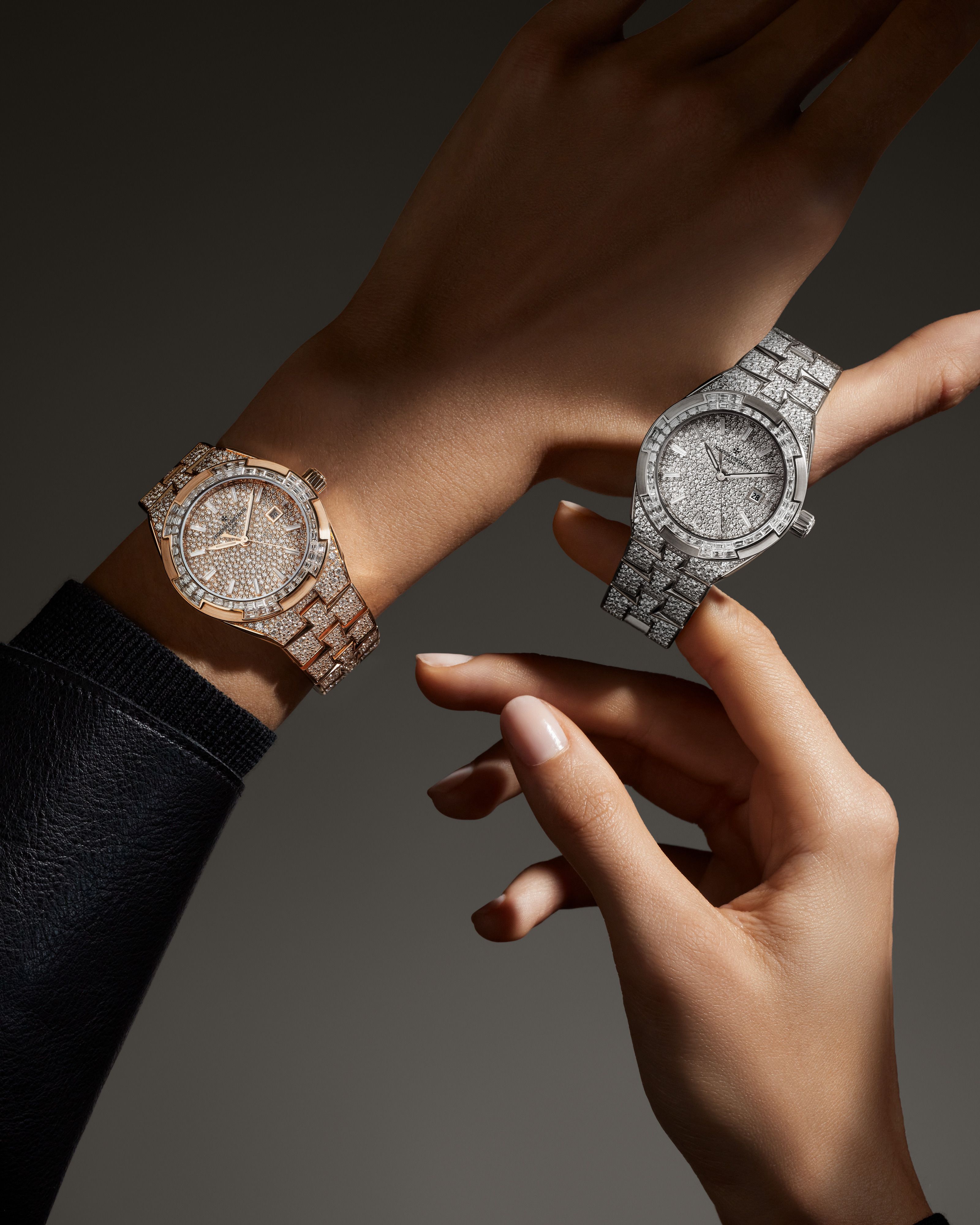

.JPG)
.jpg)
